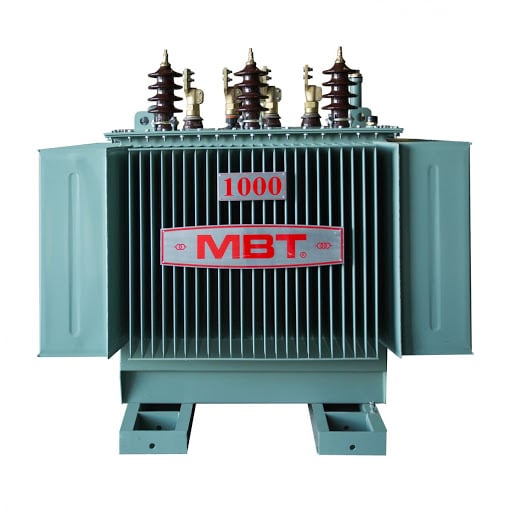Buchholz Relay Applies On The 0il-Immersed Transformer
The Buchholz relay is a safe part of an oil-immersed transformer, Which (Picture 1 and Picture 2) has two oil-filled chambers with floats and relays arranged vertically—one over the other. If local overheating, high eddy currents, or partial discharges occur within the tank, bubbles of resultant gas rise to the top of the tank.
These bubbles rise through the pipe between the conservator and the tank. As gas bubbles move along the pipe, they enter the Buchholz relay and rise into the top chamber.
Because gas builds up inside the chamber and displaces the oil, the oil level is decreased. The top float descends with the oil level until it passes a magnetic switch, which activates an alarm.
Relay and the bottom float cannot be activated by additional gas buildup. The top of the pipe is located slightly below the float so that once the top chamber is filled, additional gas goes into the pipe and continues up to the conservator. Particularly, inspection windows are provided so that relay operation and the amount of gas may be viewed during testing. If the oil level is low enough down (conservator empty), the bottom float will activate the switch contacts in the bottom chamber.
Picture 1: Buchholz Relay, Section
Picture 2: Photograph of a Buchholz Relay
These contacts are usually connected to each other to make the transformer work. This relay also serves a third function, similar to a sudden pressure relay. The magnetic paddle attached to the bottom float is positioned in the oil flow between the transformer tank and the conservator. Normal flows occurring from temperature changes are small and bypass below the paddle. If the transformer finds a fault, a pressure wave (surge) is created in the oil. This surge travels through the pipe and displaces the paddle. The paddle activates the same magnetic switch as the bottom float mentioned above, which trips the transformer. The flow rate at which the paddle activates the relay is normally adjustable. See your specific transformer’s instruction manual for details.
Every 3 to 5 years, while the transformer is de-energized, check the Buchholz relay function by injecting a small amount of air into the top chamber with a hand pump with a squeeze bulb. View the float in action through the window (center in Figure 1). Check to make sure that the correct alarm point has been activated. Open the bleed valve and drain the air out of the chamber. The air pressure cannot test the bottom float and switch. On some relays, a rod is provided so that you can test both the bottom and the top by pushing the float down until the trip points are activated. If possible, verify that the breaker will work with this operation. A voltmeter can also be used to test the switches. If these contacts activate during operation, it means that the oil level is very low, the pressure wave has triggered (lower contact), or the transformer is depleted (upper contact). If this relay is active, do not re-energize the transformer until you have determined the exact cause. If a small amount of gas is found in this relay when the transformer is new (several months after starting up), it is possible that it is just air that has been trapped in the transformer structure and is now escaping. There is little reason to worry.
If the transformer has been activated for a while (maintained) and gas is found in Buchholz, oil samples should be sent to a laboratory for DGA testing. Consult the manufacturer and other transformer specialists. The probable cause of air bubbles must be identified and remedied before re-energizing the transformer.

